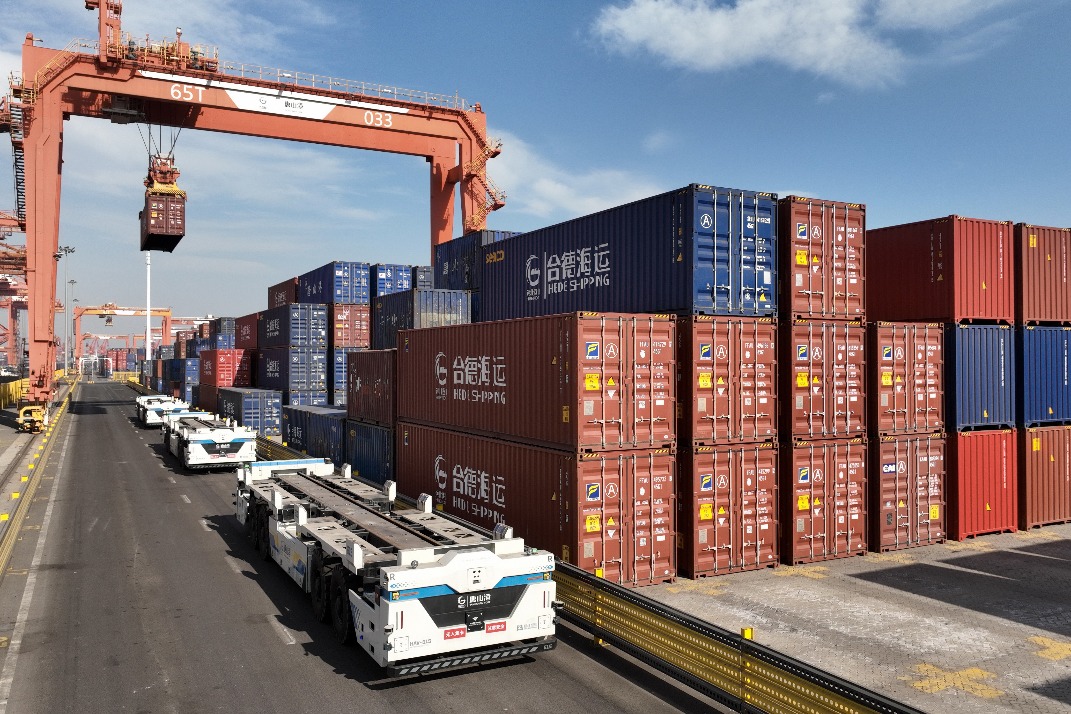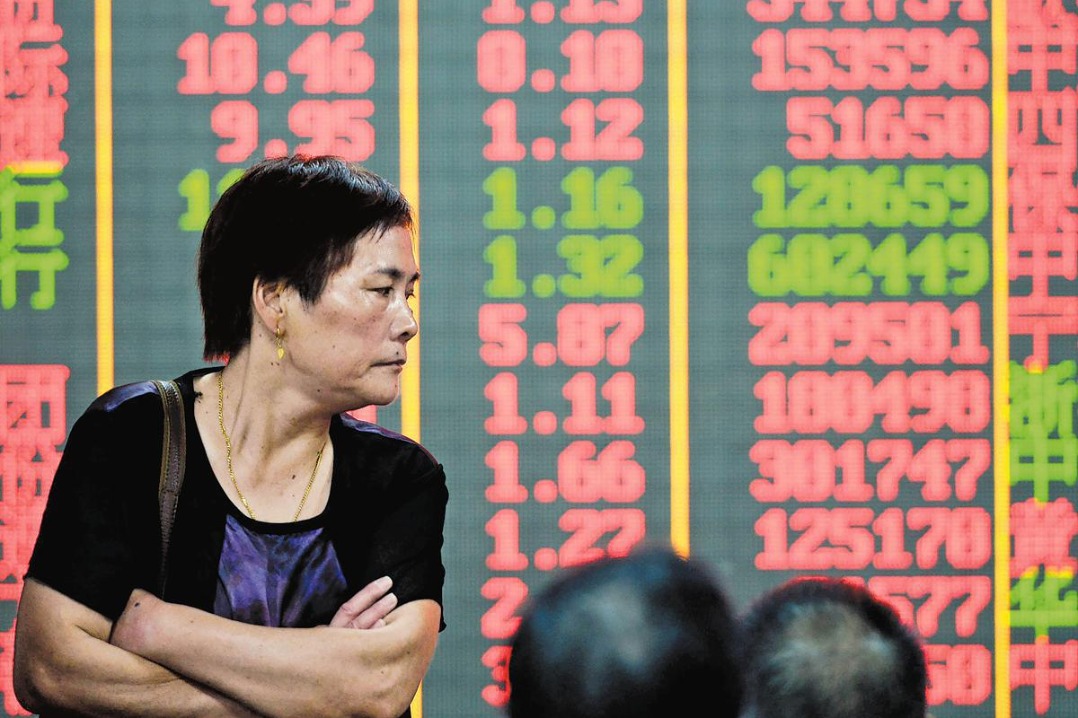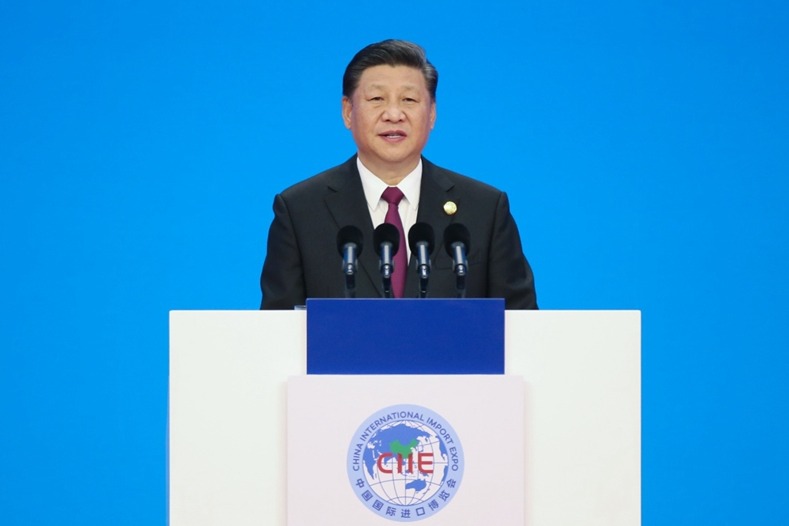Demand for TWS earbuds set to surge
By Chai Hua in Shenzhen | China Daily | Updated: 2020-02-05 09:38

AI wireless hearables could become integral to intelligent IoT interaction
Earphones used to be hung on walls or placed at the corners of counters at Huaqiang North Electronics Street in Shenzhen, Guangdong province, but now the new true wireless stereo earbuds are occupying the center stage.
The shift signals a global bonanza hidden in the small-sized gadget.
TWS earphones, containing two separate sets and a charging box, free users completely from the annoyance of cables and have recently stirred up a frenzy in Huaqiang North's electronics malls.
Some vendors believe the TWS earphone boom can be compared with that of Mp3 players.
No matter what a vendor is selling-mobile phones, computers, power packs or cables-almost all of their counters feature TWS earbuds. Some stores focus on product variety, while some just deal in even one category-products similar to Apple's Airpods.
Apple rolled out its wireless headphone AirPods in 2016, followed by other mobile phone manufacturers such as Samsung, Huawei and Xiaomi.
Research firm Strategy Analytics said Apple dominated the market segment with 60 million units in 2019. Priced $159 each at least, they could translate into about $9 billion revenue.
Products of lesser-known brands, like i100 and F88, are available in various guises and feature diverse functions, such as LED display or the ability to take photos.
In Longsheng Accessories Professional Market, one of the largest cell phone accessories markets in Huaqiang North, a seller surnamed Li said her shop now sells about 100,000 units of TWS earphones monthly and more than half of the shop's products are sold to overseas clients, especially from the United States and Southeast Asia, through both online and offline conduits.
But the sales were only about 20,000 units per month in 2017 when she first jumped into the fray. Before that, her shop only sold mobile phone chargers.
"One of our manufacturers spotted the opportunity in 2017 and suggested we pay attention to this direction. After market research, we decided to make an attempt," she recalled.
In the second half of 2018, more and more vendors swarmed into the market with hundreds, even thousands of kinds of TWS earbuds, and their prices ranged from several dozen to more than 1,000 yuan ($143), she said.
Li's store has only two types of patented TWS earphones with self-established brands selling for 299 yuan and 399 yuan. She estimated the market still has huge space to grow and is determined to keep investing to develop new types of products this year.
She is confident that her store's sales of TWS earbuds can grow by 30 to 50 percent annually in the next two years.
Meanwhile, traditional electronics component providers in Shenzhen are receiving rising orders related to TWS earbuds and are adjusting strategies accordingly.
Goodix Technology Co, a provider of in-display fingerprint sensors, in December launched a series of in-ear detection and touch control devices, which have already been adopted in Oppo's latest TWS earphones.
In May, the company also unveiled a new high-performance Bluetooth system chip that can be implemented in a wide range of mobile devices, wearables and the internet of things products.
EVE Energy, a leading lithium primary battery producer in China, has become a battery provider for Samsung's TWS product, according to a report of Hua Chuang Securities.
It also says the company's production capacity was 3 million to 4 million units of TWS batteries monthly last year and far from meeting the demand. It envisages EVE's shipment could achieve 50 to 100 million units in 2020.
Both companies' shares rocketed in 2019 and the first month of 2020 saw them reach record highs.
In addition, the TWS earphone index surged more than 200 percent in 2019 and the total value of the 17 companies involved exceeded 760 billion yuan by the middle of December, according to China's news outlet Cailian Press, citing data from Wind.
As for the future, Counterpoint Research estimates the compound annual growth rate of TWS hearables would reach 80 percent from 2019 to 2022, while annual shipments are expected to reach 120 million units globally in 2019.
Geographically, the US accounted for about one-third of the global market and China expanded by 44 percent in the third quarter of 2019.
- Cutting-edge advancements shine at expo in Las Vegas
- Coming decade set to see some smart innovations
- Crowdfunding used to promote more brands
- Xiaomi Youpin, Indiegogo collaborate to promote Chinese brands overseas via crowdfunding
- 66.3% Chinese attribute youth's hearing impairment to unhealthy lifestyles: survey
























